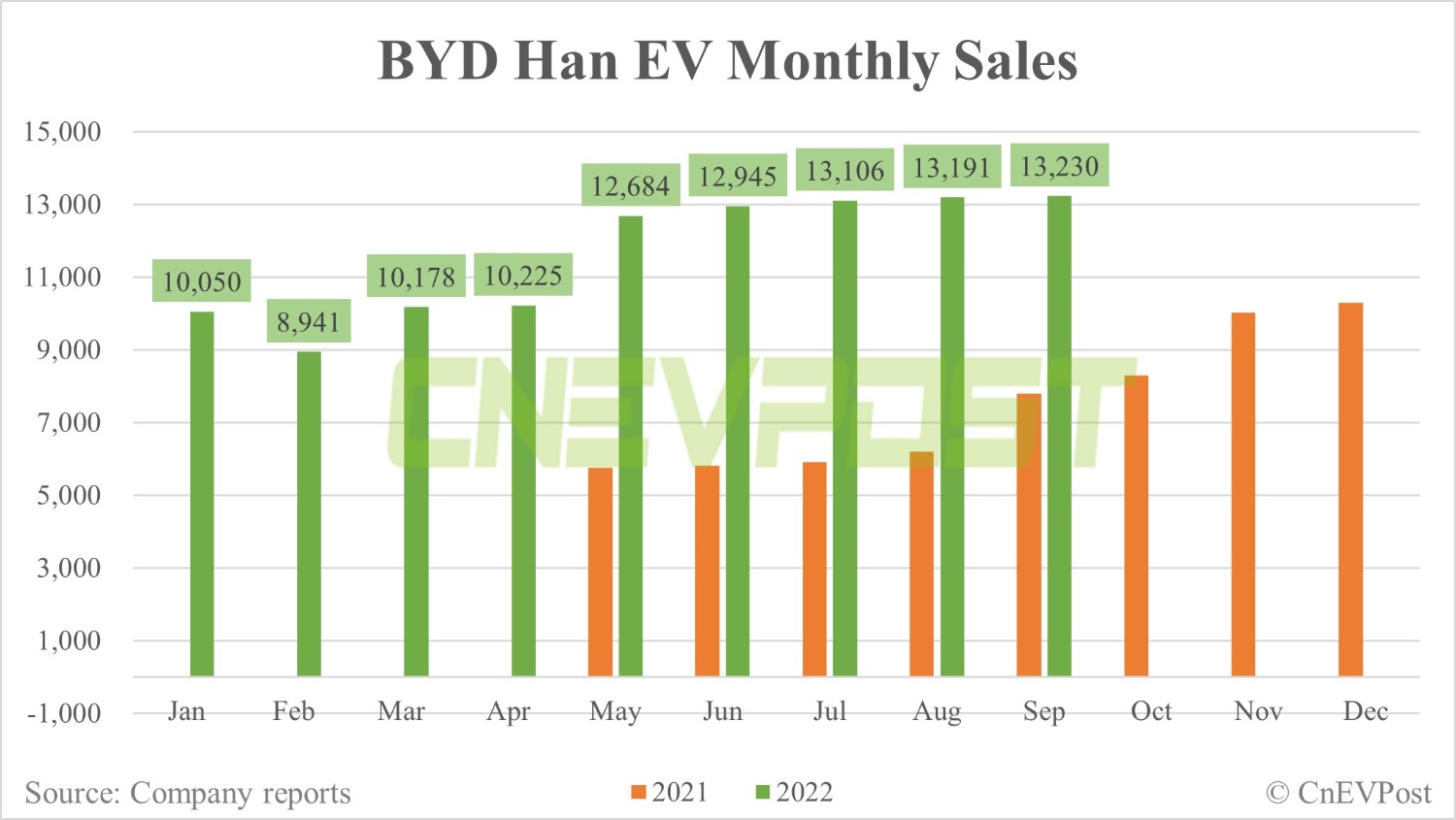BYD is expected to release a Han EV variant with lower motor power in preparation for the complete withdrawal of purchase subsidies.

BYD is set to launch a lower-performance variant of its flagship sedan Han EV, potentially preparing for the post-subsidy era of the new energy vehicle (NEV) industry at a lower cost.
China's Ministry of Industry and Information Technology on Tuesday released for public comment the latest batch of models that will soon be allowed to be sold in the country, and a new version of the BYD Han EV is included.
The Chinese public can submit their feedback between October 26 and November 1. Entry into the catalog is the last major regulatory process that needs to be completed before a model can be officially launched in China.
This new version of the BYD Han EV is not significantly different from the current model in terms of appearance, with the biggest difference being the availability of a weaker motor, the filing shows.

The model's length, width and height are 4,995 mm, 1,910 mm and 1,495 mm respectively, with a wheelbase of 2,920 mm. It is 15 mm longer than the Han EV currently on sale and otherwise remains the same.
It has an electric motor with a maximum power of 150 kW. For comparison, the cheapest BYD Han EV, which currently starts at RMB 214,800 ($29,880) after subsidies, has a front motor with 163 kW peak power and 330 Nm peak torque.
The lower maximum power motor means that the new version of the Han EV is expected to underperform the entry-level Han EV's 0-100 km/h acceleration time of 7.9 seconds.
The model will be equipped with a lithium iron phosphate battery, according to the filing, which reveals no further details, including capacity information.


The new Han EV appears to be BYD's preparation for the complete withdrawal of China's purchase subsidies for NEVs next year, and it's expected to allow the entry-level version of the flagship sedan to maintain a price comparable to the current level when there are no subsidies.
China's current state-level support for the NEV industry includes exemptions from purchase taxes and subsidies, both of which are set to expire at the end of this year. However, the former has been renewed until the end of 2023, while the latter has not yet been renewed.
According to China's current subsidy policy, one of the conditions for a NEV to be eligible for the subsidy is that it is priced below RMB 300,000.
For the regular Han EV, BYD offers four options with a pre-subsidy price range of RMB 226,140 to RMB 295,840.
All of these models will allow consumers to enjoy a subsidy of RMB 11,340 when delivered this year, with a post-subsidy price range of RMB 214,800 to RMB 284,500.
BYD Han EV sold 13,230 units in September, up 69.70 percent from 7,796 units a year ago and essentially unchanged from 13,191 units in August, according to data monitored by CnEVPost.

Including the plug-in hybrid Han DM series, Han family models sold 31,497 units in September, up 207.35 percent year-on-year.




